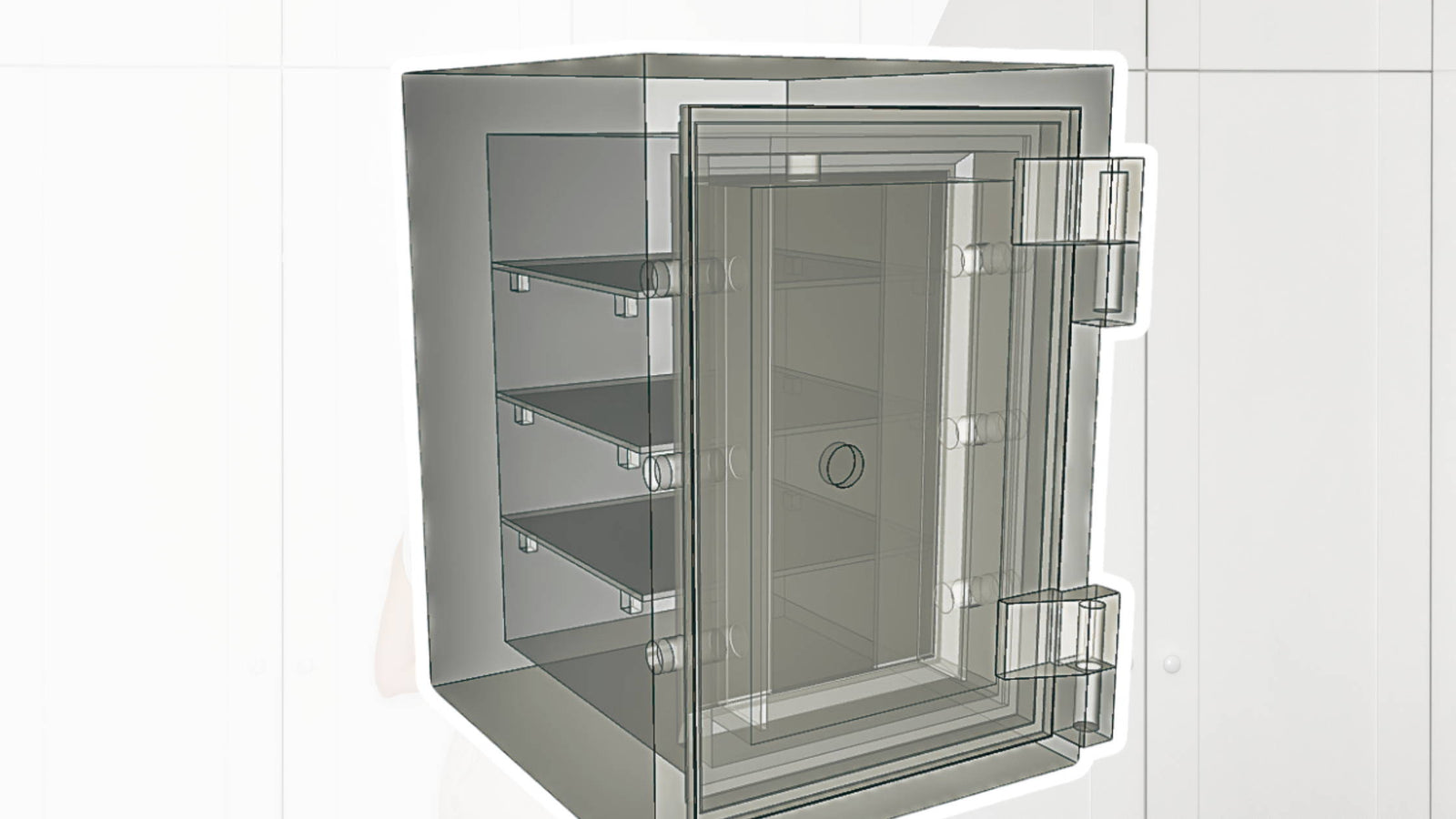- Old safes can be truly beautiful, and even practical, pieces of history that are sought after by both antique collectors and safe collectors alike. Should you come across an old safe at a yard sale or flea market you can make an awesome project out of restoring it and even have some fun in the process. If the safe is still in working condition, and depending on the locking mechanism, it may still be suitable for storing valuables. If it’s not in working condition it could still make a nice aesthetic addition to your home or yard.
Cleaning
The first step to cleaning up and refurbishing your antique safe is to thoroughly clean it with a degreasing agent. Be sure to wear rubber or latex gloves while you work and cover the floor or work in the garage or outside. The best way to go about this is to use an old rough rag and thoroughly scrub the safe with the degreasing agent. You can make a simple homemade degreasing agent from ammonia, hot water, and dish soap; or, for an especially dirty safe you can use small quantities of baking soda, dish soap, and vinegar.
Stripping the Paint and Rust
Unfortunately there is no super easy way to strip away the old rust and paint from an antique safe. There are numerous methods that you can use depending on how delicate or rough the surface is. Working your way from a rough steel wool to a very fine steel wool is a fairly basic approach that will work for most surfaces and only requires a bit of elbow grease. Other options for stripping the paint and rust include sand blasting or chemical solvents. These options, however, require a bit more preparation and some additional safety precautions. Be careful to work in a well ventilated environment in case your old safe has a lead based paint.
Repairs
Once your safe has been cleaned and stripped of paint and rust you can make some minor repairs if needed. If you are set on making an old non working safe functional this would be the time to take it to a professional. Some simple repairs that you can do on your own including banging out small dents or repairing the hinges on the door. Luckily, old safes are going to be a bit simpler than their modern counterpartsso simple repairs are more feasible for the average handyman.
Repainting
Once the surface has been thoroughly cleaned and the old paint and rust stripped off you are ready to repaint your old safe. It’s best to begin with a rust preventing primer as a base coat. Once you have your base you will want to spray paint your safe in either the original color or a color of your choosing. Apply at least two coats and ensure that it’s coated evenly. Apply any graphics or designs you desire and your safe is ready for use or display. While this can certainly be a fun project sometimes it may be best to leave an old safe in its original condition. Should you come across something especially old or fantastic it might be worth an appraisal before you begin a home-restoration project. True antique safes may look better and be worth more without being refurbished.




